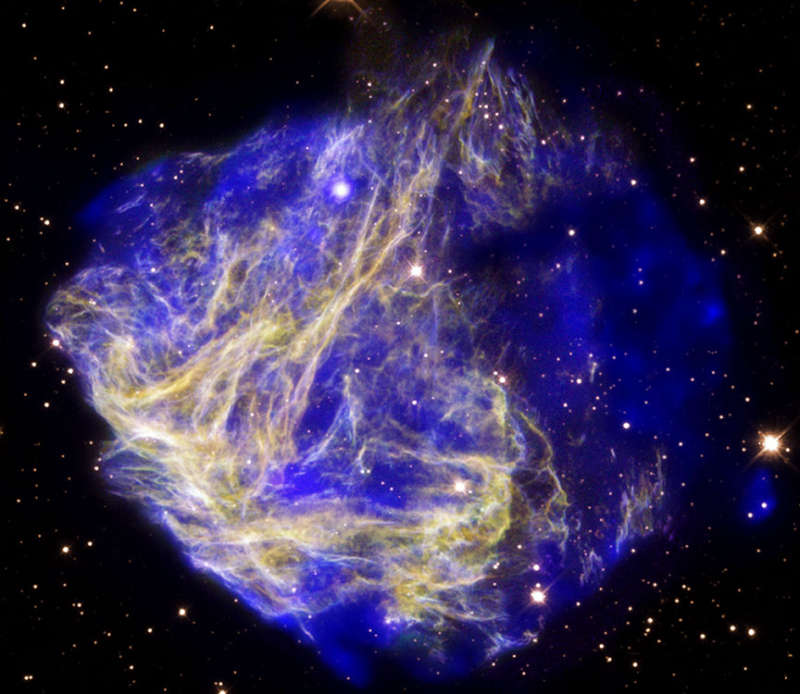Credit & Copyright: X-ray:
NASA/CXC/Penn State/S. Park et al.;
Optical:
NASA/STScI/UIUC/Y. H. Chu & R. Williams et al.
Explanation:
What is that strange blue blob on the far right?
No one is sure, but it might be a speeding remnant of a
powerful supernova that was unexpectedly lopsided.
Scattered debris from supernova explosion N49 lights up the sky in
this gorgeous
composited image based on data from the
Chandra and
Hubble Space Telescopes.
Glowing visible filaments, shown in yellow, and
X-ray hot gas,
shown in blue, span about 30 light-years in our neighboring galaxy, the
Large Magellanic Cloud.
Light from the original exploding star reached Earth thousands of years ago, but
N49
also marks the location of another energetic outburst -- an extremely intense
blast of gamma-rays detected by satellites
about 30 years ago on 1979 March 5.
The source of the March
5th Event is now attributed to a
magnetar -
a highly magnetized, spinning
neutron star
also born in the ancient stellar explosion which created
supernova remnant N49.
The magnetar,
visible near the top of the image, hurtles through the
supernova
debris cloud at over 70 thousand kilometers per hour.
The blue blob on the far right, however, might have been
expelled asymmetrically just as a massive star was exploding. If so, it now
appears to be moving over 7 million kilometers per hour.
1999 2000 2001 2002 2003 2004 2005 2006 2007 2008 2009 2010 2011 2012 2013 2014 2015 2016 2017 2018 2019 2020 2021 2022 2023 2024 2025 |
Yanvar' Fevral' Mart Aprel' Mai Iyun' Iyul' Avgust Sentyabr' Oktyabr' Noyabr' Dekabr' |
NASA Web Site Statements, Warnings, and Disclaimers
NASA Official: Jay Norris. Specific rights apply.
A service of: LHEA at NASA / GSFC
& Michigan Tech. U.
|
Publikacii s klyuchevymi slovami:
N 49 - supernova remnant - magnetar - ostatok Sverhnovoi - Magnitary
Publikacii so slovami: N 49 - supernova remnant - magnetar - ostatok Sverhnovoi - Magnitary | |
Sm. takzhe:
Vse publikacii na tu zhe temu >> | |
